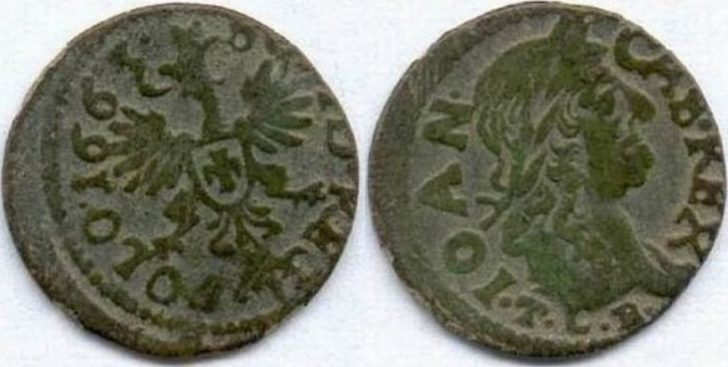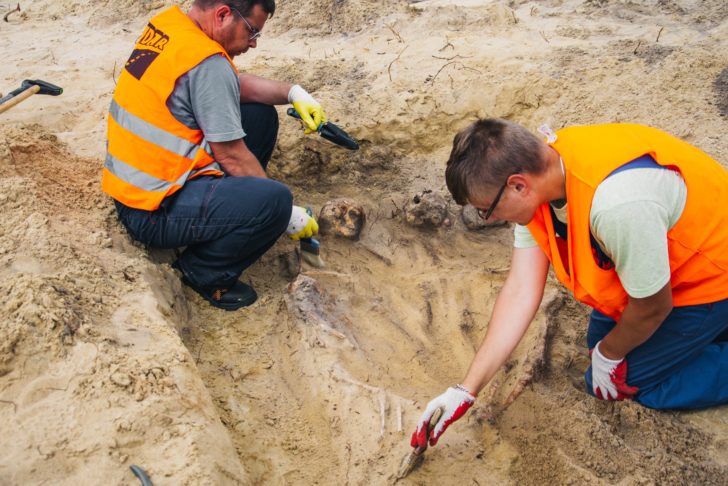In Poland, workers stumbled upon a 16th century cemetery where the vast majority of the graves belong to children. Surprisingly, some of the skeletons still have coins in their mouths, a tradition dating back to antiquity.
A highway project.
The cemetery was discovered in a wooded area being cleared for the construction of a motorway, which is part of the Via Carpathia road project to establish a north-south link from Greece to Lithuania. A team from the Arkadia Firma Archeologiczna (Arkadia Archaeological Society) was sent to the site after workers discovered human remains.

The cemetery, which dates back to the late 16th and early 17th century, is located near the village of Jeżowe in south-eastern Poland. Of the 115 people found on the site, about 70-80% were children, according to the General Directorate of National Roads and Motorways of Poland. This discovery confirms both the writings and legends describing a cemetery from that time.
Charon’s obolus.
The bodies were carefully buried in sandy soil and oriented east-west. The bodies were laid on their backs with their hands at their sides. Some skeletons had coins placed in their mouths. « This is certainly a sign of their beliefs, » said Katarzyna Oleszek, an archaeologist from Arkadia. « The coins are called oboles of the dead or Charon’s oboles.

It’s an old pre-Christian tradition that’s been going on for a long time. Even in the 19th century it was practiced by Pope Pius IX ». This funerary rite, which dates back to ancient Greece and Rome, represents a payment or a bribe to Charon, the smuggler who delivers the souls of the world of the living to the world of the dead. The presence of these pieces is certainly interesting from an anthropological point of view, but the pieces can also be used by archaeologists to date a site.
The mystery of the four children.
In this case, the coins were minted during the reign of Sigismund III Vasa, a Polish king who reigned from 1587 to 1632. Also found are coins called boratynki, which are associated with John II Casimir Vasa, who reigned from 1648 to 1668.

One of the most intriguing tombs contains four children lying side by side, with their heads in the same position, but with their legs and feet together. The left-most child in the tomb appears to have died at a very young age. It is possible that these four individuals are closely related, perhaps siblings.
A Catholic cemetery.
Indeed, it was not a « tomb », it was a cemetery of the Catholic Church, without tombstones. The « inhabitants knew exactly where the graves were and took care of them, » said Oleszek. Apart from coins, no other objects were found in the graves, suggesting the presence of a very poor community.

Speaking to the Polish press, Oleszek said his team was taking care of that part of the cemetery where only children were buried. It is possible that adult members of this community were buried in a part of the cemetery that has not yet been discovered.
Time will tell more.
The cemetery was found in an area known as Góry Kościelne, which means « church mountains ». The discovery confirms local legends about a children’s cemetery in the area, as well as historical accounts. Written documents dating from 1604 describe a trip to Jeżowe made by Catholic bishops from Krakow, a city 203 km away. These accounts describe a large parish, a church, a garden, a rectory, a school and a cemetery.

We will learn much more about this cemetery and the people buried there in the coming months and years as archaeologists plan to analyze the remains. It is important to note that the skeletons will be reburied in a nearby parish. The archaeologists will then take care to reproduce as much as possible the layout of the original cemetery, including the position in which the bodies were laid to rest.
